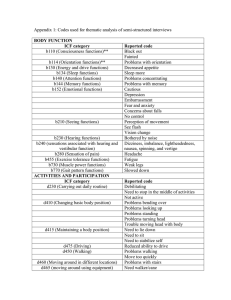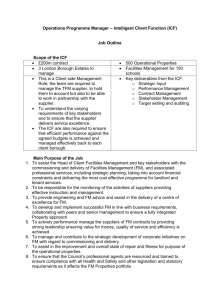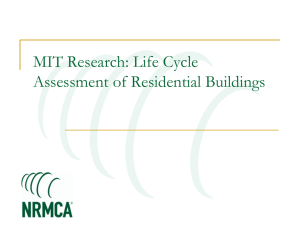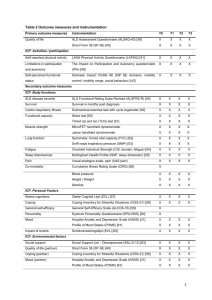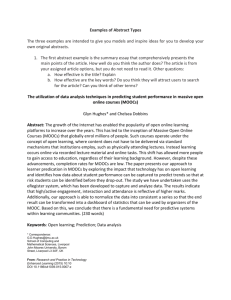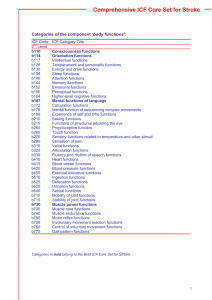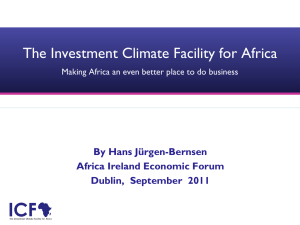You Get Out What You Put In: The Role of Assumptions Chris MacCracken
advertisement
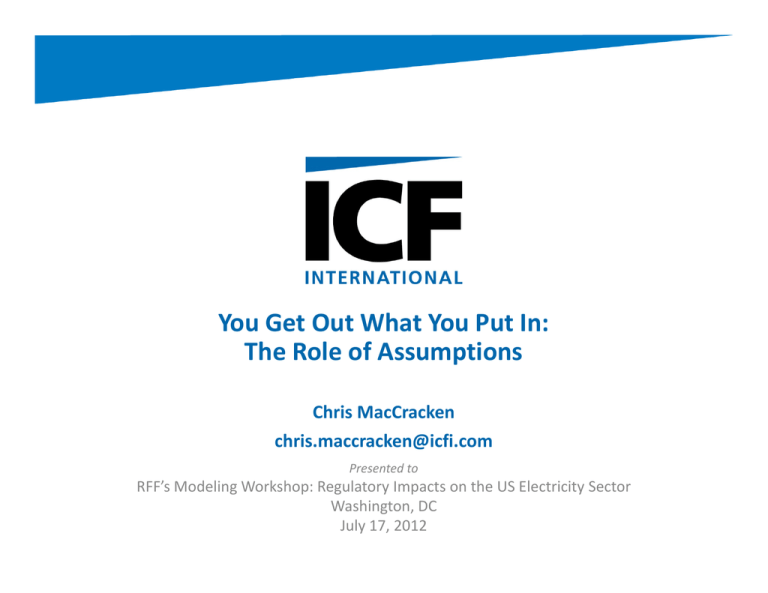
You Get Out What You Put In: The Role of Assumptions Chris MacCracken chris.maccracken@icfi.com Presented to RFF’s Modeling Workshop: Regulatory Impacts on the US Electricity Sector Washington, DC July 17, 2012 COPYRIGHT © 2012 ICF Resources, LLC All rights reserved. IMPORTANT NOTICE: REVIEW OR USE OF THIS REPORT BY ANY PARTY (“YOU”) CONSTITUTES ACCEPTANCE OF THE FOLLOWING TERMS. Read these terms carefully. They constitute a binding agreement between you and ICF Resources, LLC (“ICF”). By your review or use of the report, you hereby agree to the following terms. This report may not be copied in whole or in part or further distributed to anyone. This report and information and statements herein are based in whole or in part on information obtained from various sources. ICF makes no assurances as to the accuracy of any such information or any conclusions based thereon. ICF is not responsible for typographical, pictorial or other editorial errors. The report is provided AS IS. NO WARRANTY, WHETHER EXPRESS OR IMPLIED, INCLUDING THE IMPLIED WARRANTIES OF MERCHANTABILITY AND FITNESS FOR A PARTICULAR PURPOSE IS GIVEN OR MADE BY ICF IN CONNECTION WITH THIS REPORT. You use this report at your own risk. In no event shall ICF be liable to any party as a result of use of this Report for any direct, indirect, special, incidental, or consequential damages (including, without limitation, damages for lost profits, lost data, or business interruption), whether based on warranty, contract, negligence, tort, or any other legal theory, even if ICF has been advised of the possibility of such damages. © 2012 ICF International. All rights reserved. 2 THE ROLE OF ASSUMPTIONS Difficult to project the future generation mix, but insights are available from trying Even consultants don’t have a crystal ball, so it’s critical to test assumptions. However, assumptions do often converge across market participants, allowing projections on the tail ends to be set aside. Scenario analysis defines the bounds and identifies key drivers. © 2012 ICF International. All rights reserved. 3 THE ROLE OF ASSUMPTIONS Uncertainties around assumptions fall into three categories Policy/Regulatory Technology Markets • What will be the outcomes of EPA’s rulemakings? • Options for new capacity? • Economic growth • Legal challenges against CSAPR and MATS • Nuclear • Electricity demand • Renewables w/ back‐up • Fuels • Final rules for ash and water intake • How will pollution controls perform and what will they cost? • Proposal for NSPS for existing sources • HCl‐compliant coal • Will Congress act? • CES or CO2 • Gas • Coal • DSI • CCS • Multi‐pollutant © 2012 ICF International. All rights reserved. 4 THE ROLE OF ASSUMPTIONS Views on many assumptions are converging, but views on others moving apart Converging Little change • Regulatory timing • Natural gas prices • Pollution control cost and performance • Once consensus high, test low • FGD & DSI • Now consensus low, test high • Electric load growth Diverging • GHG/CO2 program • CES • NSPS • Cap & trade • Nothing • Cost of new capacity • New nuclear © 2012 ICF International. All rights reserved. 5 THE ROLE OF ASSUMPTIONS What are other assumptions important to the future generation mix? HCl compliant coals for MATS – Initial hesitation – Assumptions range from requiring DSI back‐up to not relying on compliant coals at all Lifetime of coal facilities – Convergence around 60‐yr lifetimes for nuclear units – Assumptions ranging from 60 yrs. to unlimited for coal units Energy efficiency and reductions in demand – Assumptions range from what has bid into the markets, held flat over time, to full realization of state goals/programs and flat (or declining) load © 2012 ICF International. All rights reserved. 6 THE ROLE OF ASSUMPTIONS Testing the impacts of different assumptions The ICF Q2 Reference Case assumes CSAPR, MATS, ash, 316(b), and a federal CO2 program post‐2020, as well as our latest projections on fuel prices and other drivers. To examine how uncertainties around some of the key drivers would impact the future generation mix, we looked at 5 scenarios: – Low Demand (or lower demand) – Assuming AEO 2012 Early Release U.S. load growth – No MACT (MATS) – Assuming no air toxics requirements beyond state mercury requirements; also removed ash and water requirements – No CO2 – Assuming no federal CO2 program post‐2020 (RGGI and AB32 remain) – High Gas – Assuming gas prices roughly 20% higher than the Q2 case by 2030 – Low Gas – Assuming flat $4/MMBtu gas through 2030 © 2012 ICF International. All rights reserved. 7 THE ROLE OF ASSUMPTIONS The future is not certain Change in scenario projection from ICF Q2 Reference Case 2030 Coal Retirements (GW) 2030 Coal Generation (TWh) 2030 Gas Generation (TWh) Low Demand No MACT No CO2 High Gas Low Gas ‐40 0 40 © 2012 ICF International. All rights reserved. ‐500 0 500 ‐500 0 500 8
